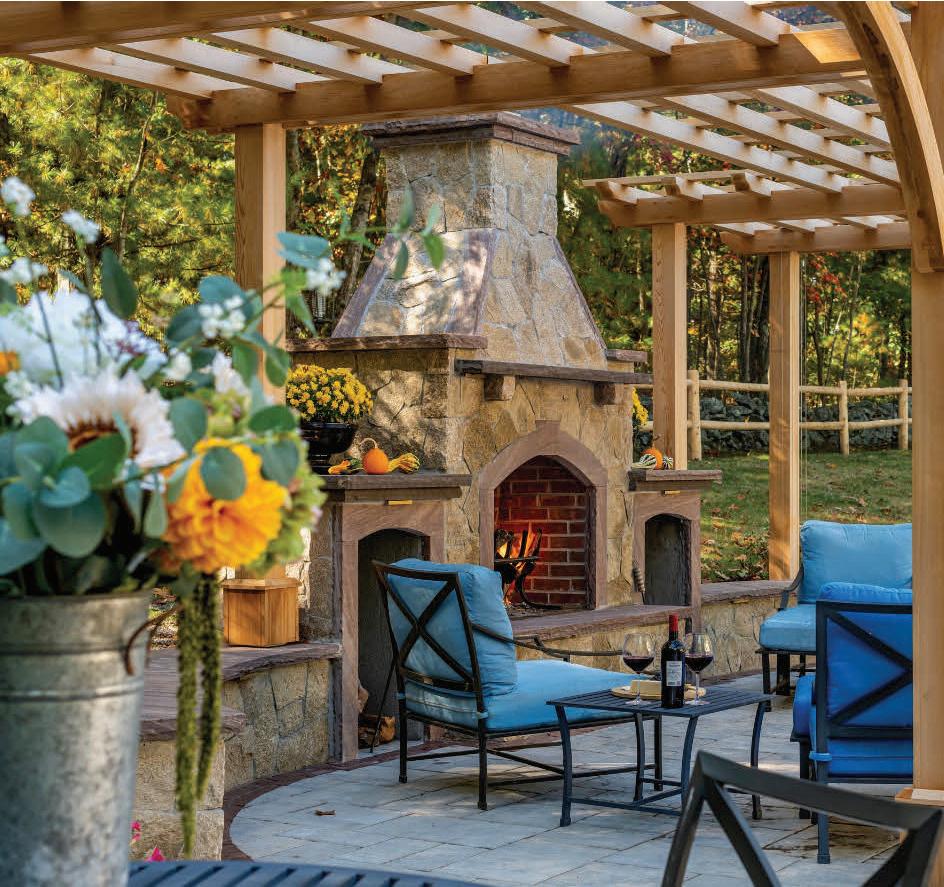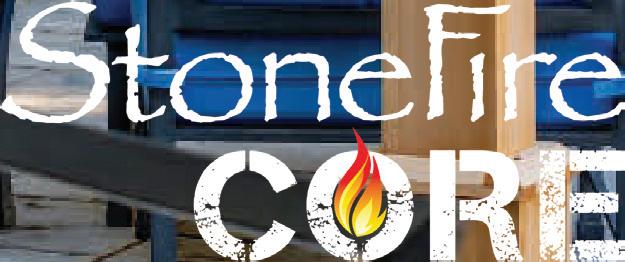





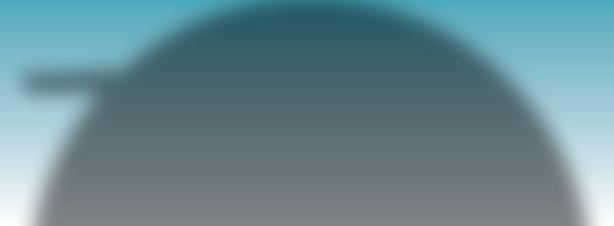




























































































Every year the two old maple trees along the driveway hold a dance of color in yellow, orange and red.
This display as the green chlorophyll fades from the leaves is expected, of course, but it never ceases to amaze. As if struck by some primeval force, I freeze and stare at the canopy for an inordinate amount of time, especially on cool, sunny mornings as I sip my coffee.
Autumn in New England is a delight to behold when blue skies make the landscape pop like Oz and gray days serve as a blank canvas for piercing colors. It’s a great time of year to move around. Just take a look at the roads during leaf-peeping season.
With that spirit, this edition of Around Concord magazine invites you to hop in the car and scout around, like a trip to forage for mica and other minerals at Ruggles Mine up in Grafton, or sip a pint (or three) on the weekend at Canterbury Aleworks with owner Steve Allman, who built the microbrewery by hand to showcase its English charm and Old World feel.
In Hopkinton, try the deck at the Lakehouse Tavern to devour both the food and the scenery along the shores of Kimball Lake. Perhaps you’d prefer to visit one of more than a dozen fairs and festivals this fall, like trying a new cuisine at Concord’s Multicultural Festival, watching an old-fashioned oxen pull at the Deerfield Fair at the end of September, or feasting your eyes with everything fall at the Warner Fall Foliage Festival in October.
Enjoy your reading and your travels, too.
Jonathan Van Fleet Editor

















MONITOR PUBLISHING CO.
P.O. BOX 1177
CONCORD, NH 03302 (603) 224-5301
editor@aroundconcord.com
PUBLISHER
Steve Leone
DIRECTOR SALES & MARKETING
Sean McKenna
EDITOR
Jonathan Van Fleet
DESIGN
EDITOR
Rachel Shepard
ASSISTANT EDITORS
Allie Ginwala
Arianna MacNeill
Hannah Sampadian
CONTRIBUTORS
David Brooks




Sofie Buckminster
Sarah McCraw Crow
Geoff Forester
Sruthi Gopalakrishnan
Jeremy Margolis
ADVERTISING
DIRECTOR
Steve Pare
ADVERTISING
Tim Brennan
Joelle Ciras
Justin Graybill
Deb Spaulding









When Alyssa McKeon moved to Hopkinton in 2017, she already knew she was going to like her new home. Her husband, Luke, is a Hopkinton native and Alyssa fell in love with the town during visits with his family. Now, as coowner of Witching Hour Coffee & Provisions, McKeon is able to connect to her community even more through her eco-conscious business that roasts small-batch coffee and provides sustainable personal care and home cleaning essentials.
Always on the lookout for local gems that align with her values of community and sustainability, here are some of McKeon’s favorite places to shop, eat and enjoythroughout theCapital Region.(Bonus: Youcan gether freshly roasted coffee at each of them!)


Contoocook Village, home of Witching Hour Coffee & Provisions, is cute as a button and absolutely worth the visit. Fuel up before exploring by grabbing a cup of coffee and a fresh baked goodie. While you’re there, check out their thoughtfully curated homewares.
This charming market and café is a staple in Bradford, offering a delightful selection of local produce, groceries, and baked goods. Their commitment to sustainability is evident in every aspect of their business, making it a perfect match for anyone who values eco-friendly practices. Whether you’re stopping by for locally grown veggies or a lovingly crafted grab-and-go sandwich, Sweet Beet is a must-visit for wholesome, locally sourced food.


For an experience that combines creativity, flavor and a deep commitment to local ingredients, look no further than Table in Concord. This bakery is a true gem, offering a menu that showcases the best of New Hampshire’s seasonal bounty. Every dish is thoughtfully prepared, making Table a favorite spot for a memorable bite in Concord.
We love local farmers markets and need to give a big shout-out to both the Contoocook (Saturdays from 9 a.m. to 12 p.m.) and Canterbury (Wednesdays from 4 to 6:30 p.m.) Farmers markets – they are vibrant hubs of local agriculture and craftsmanship. These markets bring together farmers, artisans, and community members in a celebration of fresh, local food and handmade goods. From seasonal produce to artisanal breads, these markets are a weekly highlight for anyone passionate about supporting local and sustainable agriculture.

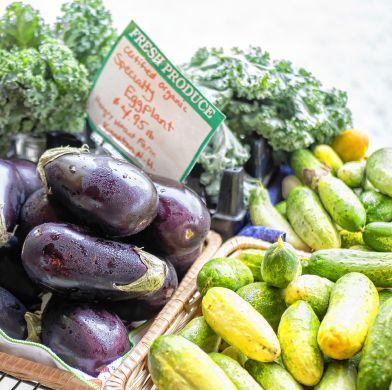
Nestled in the heart of Warner, this community-focused market has fresh baked goodies, all the fixings for lunch, and locally grown produce. Warner Public Market embodies the spirit of New Hampshire’s small-town charm and dedication to supporting local farmers and vendors. It’s the perfect launching point for exploring Warner.

Best-selling author
Jean Hanff Korelitz discusses her time in New Hampshire, her writing process and her upcoming appearance at the inaugural NH Book Festival in Concord
The New Hampshire Book Festival is coming to Concord this October. The inaugural festival will host more than 40 nationally recognized authors. Friday, Oct. 4 will include two keynote speakers and Saturday, Oct. 5, will bring a free, all-day festival of author conversations, panels and book signings, on South Main Street and in Capitol Center for the Arts’ spaces. More info at nhbookfestival.com.
On Friday, Oct. 4, the New Hampshire Book Festival will welcome NY Times-bestselling author Jean Hanff Korelitz as the festival’s inaugural keynote author. Jean’s literary thriller The Plot was one of 2022’s biggest sellers; Stephen King called The Plot “ one of the best novels I’ve ever read about writers and writing. It’s also insanely readable … the suspense quotient is through the roof.” Jean’s forthcoming novel The Sequel is a follow-up to The Plot, publishing Oct. 1, just in time for the New Hampshire Book Festival.

New Hampshire Book Festival co-founder Sarah McCraw Crow talked to Jean about the writing life, writing literary thrillers, and what New Hampshire means to her.
Your upcoming visit to Concord for the New Hampshire Book Festival will be your first appearance here. But New Hampshire isn’t new to you you’re an alum of Dartmouth College, and at least one of your novels is set in New Hampshire. Can you talk about New Hampshire’s role in your writing?
Most Dartmouth alumni have a soft spot for New Hampshire. There’s a much-ridiculed line in our alma mater song about how we have “the granite of New Hampshire in (our) muscles and (our) brains,” and we
always laugh when we sing it, but you know…you don’t spend four years in this state without being changed by it. And my father grew up in Lawrence, Mass., which is near enough to be New Hampshire adjacent. As for my books, The Sabbathday River (1999) is fully set in New Hampshire, and Admission (2009) takes a trip to Dartmouth. Several chapters of The Latecomer (2022) are set at a fictional college in New Hampshire, and the novel ends in the parking lot of a diner in Concord. My new novel, The Sequel (Oct. 1, 2024), includes scenes at an artists’ colony that looks a whole lot like MacDowell. Like the song says: the granite of New Hampshire is in my muscles … and my brains.
Tell us a little about the process for writing The Plot, which you wrote during the pandemic.
I was really in trouble with the novel I’d been writing, The Late-
comer, and my editor kept rejecting it. In January 2020, after another rejection and during a post-mortem meeting in my editor’s office, I suddenly found myself telling her about another idea I had, about a failed writer teaching at a low-residency M.F.A. program in Vermont, where he encounters a student with a brilliant idea for a novel. When the pandemic began, my editor encouraged me to put The Latecomer aside and write that other idea. I did what she said, and it was completed in four months, which I still find absurd. After the book was finished, I went back to The Latecomer and finally saw a way to solve its many problems. It was published in 2022.
And did the first glimmers of The Seeuel show up while you were working on The Plot, or not until later? Did the pieces fall into place pretty quickly for The Sequel, or


not so much?
It never occurred to me that I would write a sequel to any novel. I think I was packing up our apartment (we moved 18 months ago) when an idea suddenly popped into my head about what might happen next to certain characters in The Plot. It was kind of amazing that I’d managed to put so many pieces in place that the plot of The Sequel was even possible. Then again, perhaps I made The Sequel out of what was available to me in The Plot.
You’ve written nine novels over the past 20-some years. How do you know when you’ve hit on a premise that will work as a novel?
A weird little idea pops into your head and you think: “Hmm. That’s interesting.” Then a few months go by and you think: “That weird little idea? It’s still interesting. In fact, it’s really interesting.” But you’re not actually writing your book yet, because writing is hard I am probably not the first writer to say this and, frankly, you don’t want to do it. So when do you begin to put this interesting story on paper (or, in my case, screen?) There’s a very delicate moment when it’s actually harder not to be writing than it is to be writing. The more novels I’ve written, the better I’ve become at recognizing, and acting on, that moment.
What are you reading right now?


Summer is great because I take a break from my literary series, BOOKTHEWRITER (bookthewriter.com), for which I’m required to read about 25 books a year. I love all that reading, but there’s definitely a work element to it, as I have to prepare for the events with lists of questions for the authors. So right now my reading list is pure pleasure: Abraham Verghese’s The Covenant of Water and listening to Judy Blume’s In the Unlikely Event, because I’m expecting to see both authors in a few weeks at a writers conference. ◆


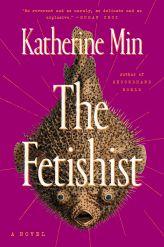







In keeping with the theme of the coming New Hampshire Book Festival, held Oct. 4 and 5 in Concord, we decided to highlight work by five of the event’s featured authors, who also have ties to the Granite State. The inaugural festival, which will take over parts of downtown over those two days, includes more than 40 nationally recognized authors. Find the complete schedule of the NH Book Festival at nhbookfestival.org. For more information about ticketed keynote events with celebrated authors Jean Hanff Korelitz and Kate DiCamillo, go to ccanh.com/show/24000135.
– Elaine Loft
Selene
Lyra Selene lives with her husband and daughter in Dover, in an antique farmhouse that she says “probably isn’t haunted.” She’s the author of the young-adult novels Amber & Dusk and Diamond & Dawn, and her adult debut, A Feather So Black (Orbit, March 2024), is a romantic fantasy. It tells the story of a defiant changeling, her cursed sister, and the dangerous fae lord she must defeat to save her family. “Whether you’re writing urban, historical, or alt-world fantasy, or science fiction set in a galaxy far, far away, world-building is a crucial part of the story-telling process,” Selene says. “The world (or universe!) you create must be complex and multi-layered; it must be a place your characters operate in and interact with; and it must set the stage for your plot.”


Lochan Sharma, above, and Terry Farishm, below
Terry Farish and Lochan Sharma are the co-authors of Go Home (August 2024), a young-adult story about immigration and prejudice, torn loyalties and belonging, set on the New Hampshire Seacoast. Go Home is told in the alternating voices of Olive, who wants to make a future with her boyfriend, and Samir, a Bhutanese Nepali refugee beginning a new life in America.
Terry Farish lives in Portsmouth; she’s also the author of The Good Braider (YALSA and SLJ Best Book for Young Adults), Either the Beginning or the End of the World (Maine Literary Award), and A Feast for Joseph (with OD Bonny, illustrated by Ken Daley). “Writing for me is deep immersion into what I don’t know,” Farish has said. “It sometimes involves research over years until I put the research away and begin to write.”
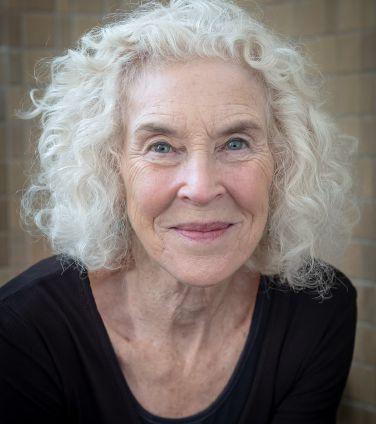
Lochan Sharma was born in Nepal. His family was registered at Timai refugee camp after they were exiled from Bhutan. Sharma and his family moved to the US in 2009, and now live in Concord. Currently working on his biology degree at Keene State College, Sharma spends his free time playing music. Go Home is his first book.

Author and illustrator Lita Judge, who lives in Peterborough, has written over 35 nonfiction and fiction books, including Mary’s Monster, Red Sled, Flight School and Don’t Worry, Wuddles. Awards for her books include the International Reading Association Award, ALA Notable, Kirkus Best Book, and the Jane Addams Honor. Mary’s Monster, a biography of Mary Shelley, received nominations for the Carnegie and Kate Greenaway medal, the UK’s most prestigious children’s books awards.
Judge’s life is as wondrous as her books: She was born on a small island in Alaska, so remote that her family had to fly to reach other communities. She spent summers with her grandparents in Wisconsin. They were biologists, and Judge learned to band marsh hawks, raise kestrel chicks, feed owls, and take care of many different animals. Before she knew she wanted to be an author and illustrator, she thought she wanted to be a paleontologist. The summer Judge turned 15, she worked for the Tyrrell Museum of Paleontology in the badlands of Canada, digging up dinosaur fossils. She says that both the animals that live with her (three cats and a little green parrot) and the animals in her yard in the woods (including bear, fox, and deer) inspire her work.







Kayla Min Andrews is a Korean American writer living in New Orleans. She grew up in central New Hampshire, majored in English at Amherst College, and taught English in rural France. Andrews edited the manuscript of The Fetishist (Putnam, January 2024), a novel written by her mother, celebrated author and former Plymouth State University faculty member Katherine Min, who died in 2019. The Fetishist is the story of three people – Kyoko, a Japanese American punkrock singer; Daniel, a philandering violinist forced to confront the wreckage of his past; and Alma, the love of Daniel’s life, a Korean American cello prodigy adored for her beauty, passion, and talent, but who wonders if she was ever truly loved. The Fetishist has been called an “exuberant, provocative story that confronts race, complicity, visibility, and ideals of femininity.”







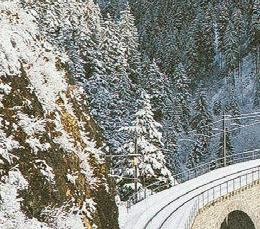













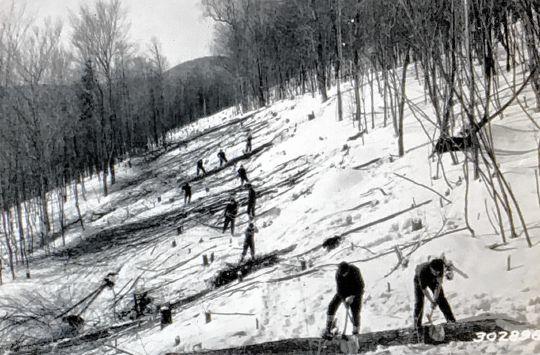

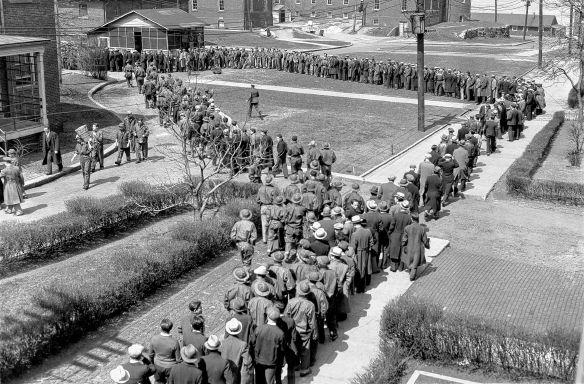

By DAVID BROOKS

Almost a century ago, thousands of young men began arriving in New Hampshire to live for months or years in cabins they built themselves while doing strenuous work in the wild, including cutting state Route 118 through the woods, helping create Bear Brook State Park, and repairing the Old Man of the Mountain.
Even though we still reap the benefits today, most of us have no idea they were here.
Filling that hole in our memories is the main goal of a new selfpublished book, “Corps of Granite,” about the dozens of Civilian Conservation Corps camps that operated in New Hampshire from 1933 to the early 1940s. The CCC was a program to help unemployed men between ages 18 and 29 (no women were allowed) during the Great Depression, one of several sweeping federal programs in President Franklin Roosevelt’s New Deal to overcome the nation’s economic stagnation.
The men – more than a million overall in some 1,400 camps throughout the country –fought forest fires, planted trees, created roads, built wildlife refuges and fish hatcheries,
ABOVE: Images from the book; RIGHT: A Corps of Granite poster
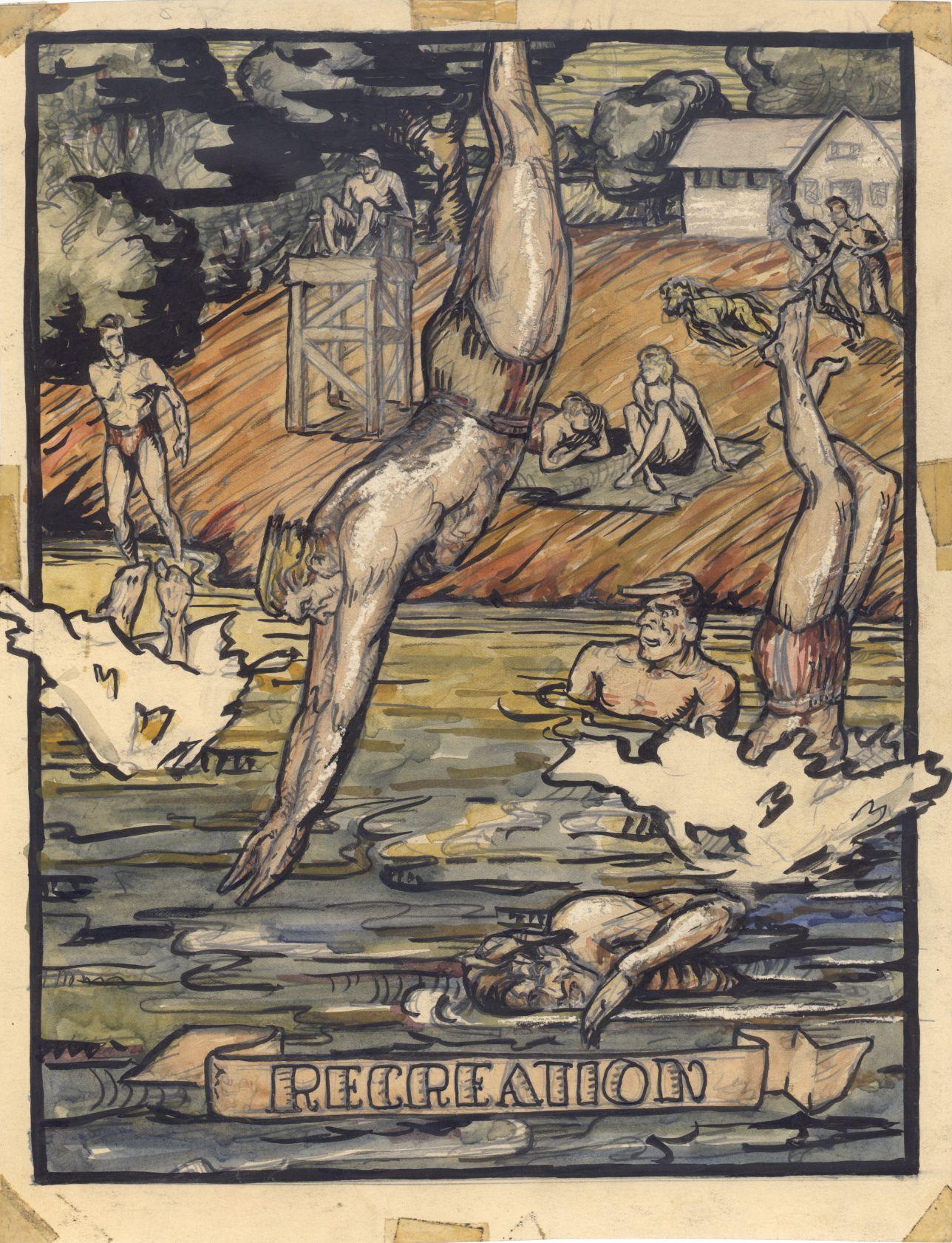
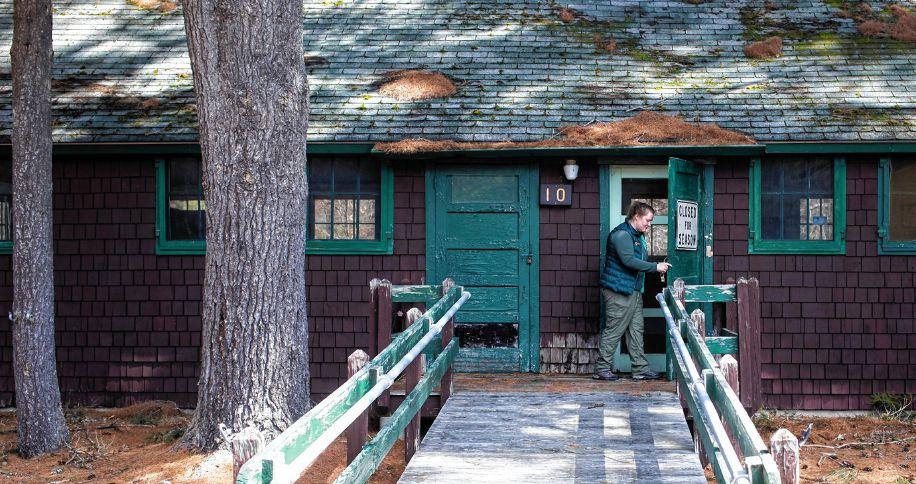
as well as bridges and campground facilities. Many of the nation’s federal and state parks were virtually created by them.
“It’s a partly forgotten history. The physical structures, the camps that they set up, pretty well disappeared and the people are all gone,” said Robert Averill, co-author “Corps of Granite.”
But the work they accomplished remains.
“It was something. You’ve got these guys coming from all kinds of places the social stratification, the experience of learning how to cut wood, run machinery, build roads, do blasting,” said Kris Pastoriza of Easton, the other co-author. “Who could make that happen now? For something like that to happen today it would have to be desperation – and maybe they were desperate then.”
Each worker received $30 per month in addition to room and board at a work camp – and was required to send at least $22 home to support their families. Education was often provided; by one estimate, 57,000 illiterate men learned to read and write in CCC camps.
“Corps of Granite” isn’t a traditional history told in chronological form, but is instead a collection of memories, including photos and sketches, selected from the relatively few sources that exist about CCC camps in New Hampshire.
“It is a bit of a patchwork book. That’s not unintentional,” said Averill.
Snippets include Diary of a Rookie, memories of former CCC workers gathered decades ago, and contemporary photos of CCC camp remnants that can be found in the woods.

These show that the camps were lively, a sort of mix between a military base, Boy Scout summer camp, jamboree and work site. Boxing matches, plays, and even dances were common for off-hours.
Averill is a Massachusetts resident who attended Dartmouth College a half-century ago and became enamored with the area around Mt. Moosilauke. He and Pastoriza, who lives just north of Moosilauke, are in the midst of publishing a 13-volume set focusing on that 4,800-foot mountain. “Corps of Granite” is a bit of a departure for them, although about onethird concerns the Wildwood CCC Camp, the first built in New Hampshire and one of three that existed around Mt. Moosilauke. “This should have broader appeal,” Averill said, although he added that it, like the other Moosilauke books, won’t pave the road to riches. “It’s a retirement book. I paid for it myself,” he said.
One group of readers who might already have a sense of CCC history are Bear Brook visitors since the park has one of the few CCC camps still standing. The park’s CCC Museum, guarded by a statue of an impressively buff CCC camper, has a ton of artifacts showing how the men lived and worked as they built the bathhouse at Catamount Pond, Broken Boulder Trail and Spruce Pond Camp, which the Student Conservation Association now calls home. Residents can rent restored CCC cabins at Bear Hill Pond camp.
The books are also available online through Bondcliff Books and the Mountain Wanderer and at some bookstores around the state. To find out more, check moosilaukebooks.com/ ◆














By DAVID BROOKS
Since it reopened in June, the reborn Ruggles Mine is proving a hit with rock-hounds and campers – “I’ve got 26 cars in the parking lot and it has been misty or rainy all day,” said owner Joe Bodge. But there’s one proviso: leave the rock hammer at home.
“There’s no hammering or chiseling,” said Bodge concerning the one big change from Ruggles Mine operations in years past. The reason, he says, is both to trim insurance costs and because the walls of the mine “slowly have been degraded after people hammering in them.”
“Most people are hammering at the same height –walls give away. It costs too much to scale, trim off rocks that loosen,” he said.
On the other hand, Ruggles visitors can now do something they couldn’t always do before: dig through the material put aside when it was a working mine, known as tailings, to see what they can find. “We
Photos by Geoff Forester

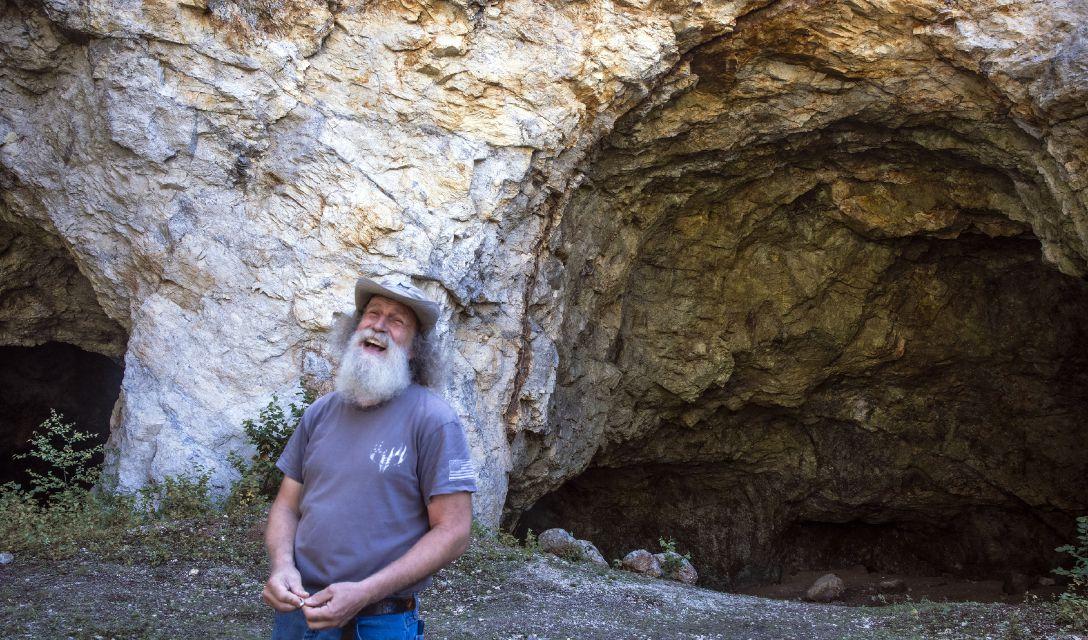
opened an area that had never been opened to the public before,” said Bodge.
The mine atop Isinglass Mountain in Grafton dates back to 1803, when it became the first commercial mica mine in
the country. After the mine closed it became a tourist attraction in 1961, luring generations of geology fans until it shut in 2016. The 235-acre property was sold in 2019 to a group that never opened it, then sold to Bodge and a part-




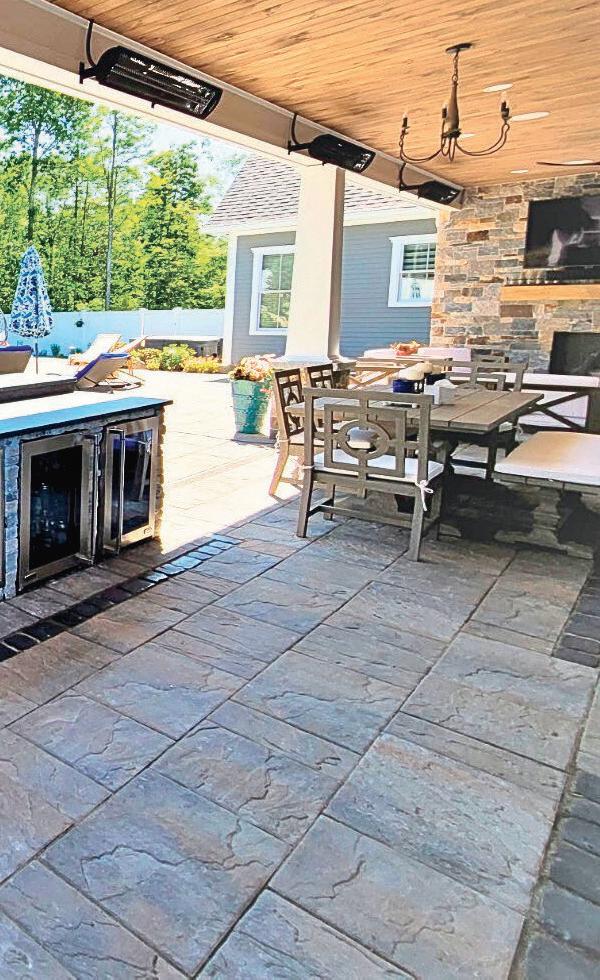

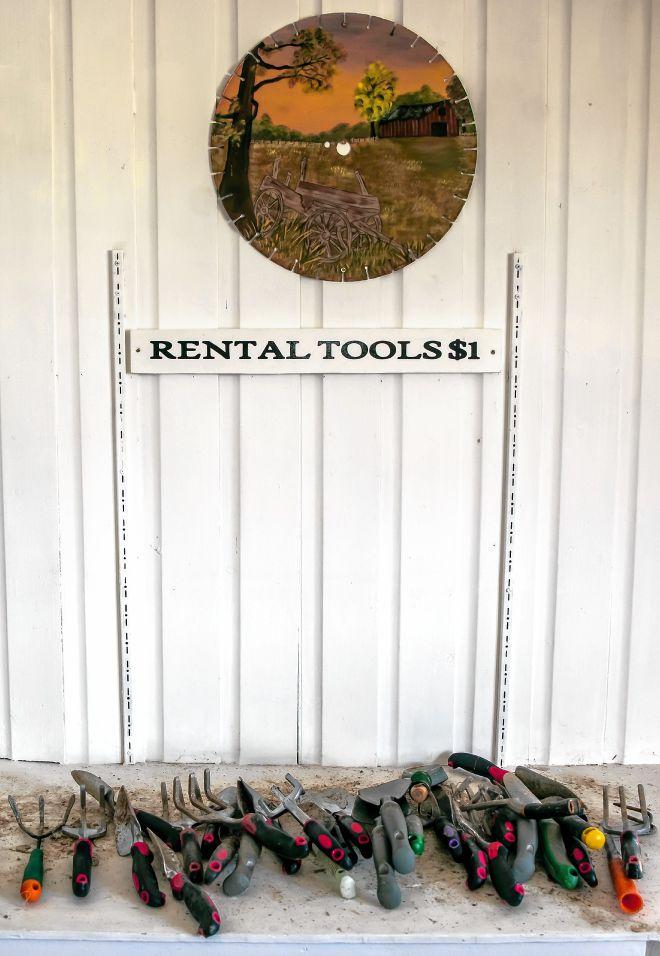
The rental tools for the Ruggles Mine in Grafton. The mine in Graftonhasre-openedunder thenewownershipof Joe Bodge this year.
ner in 2023. Bodge is now the sole owner and operates it with his wife, Dorene.
Bodge says he has no background as a working geologist but became a “rock hound” later in life. “I bought this place for the love of the rocks.” He also owns the mineral rights to a former working mine in New Mexico, where he collects “fluorite, petrified wood, dendrite” and other items used to make jewelry.
A big part of Ruggles Mine’s attraction is camping, albeit of a basic kind. Bodge provides a fire ring and a portable toilet but

ABOVE:Ruggles Mineowner JoeBodgeholds courtas people comethrough the entranceof themine atop Isinglass Mountain in Grafton which dates back to 1803, when it becamethe first commercial micamine in the country.
BELOW: A special flashlight shines on the mica on the rocks from the Ruggles Mine in Grafton.
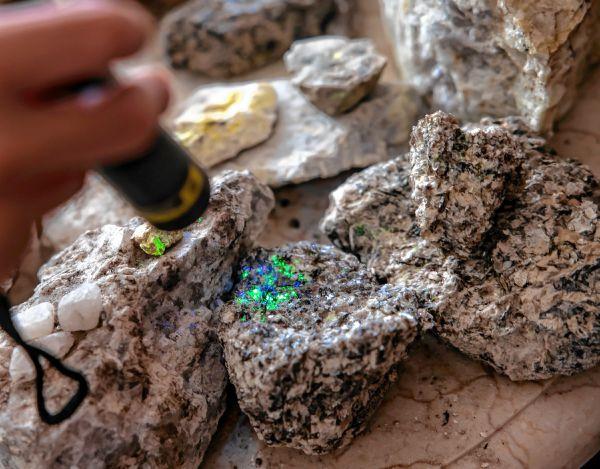
that’s it – no RV hookup and bring your own supplies. There’s a small gift shop. He does a guided walk after the sun goes down: “Luminescent materials show up a lot better at night!”
“We’ve been pushing a couple hundred people a day, every day we’re open,” Bodge said in a recent interview, ticking off visitors. “This Saturday we’ve got about 20 coming up. Next weekend there’s a Girl Scout troop coming up, plus a party of 8, 2 parties of 6 ...”
So far the site occupies about 30 acres. He’s logging some of the rest and has plans for an off-
roading course and more formal campground with “actual bathrooms, running water.”
As for location, getting up Isinglass Hill isn’t as tough as some say. Bodge notes that a Miata Club recently held a meeting at the Ruggles Mine, arriving in 15 of the low-slung Japanese sports cars. “If they can make it up the hill, everybody can!”
Mining costs $30 a person, which lets you fill a 5-gallon bucket with minerals, with kids under 10 free. Camping is $10 per person per night.
For more information, see www.rugglesmine.net.

A lovable pub found in the Canterbury forest


ceeding down the staircase, green hops surround the handrail, a multilevel terrace of beer barrel tables comes into view, and the faint tune of an Irish jig emanates.
Ambling into the cramped, dim quarters of the nano-brewery, you may feel transported to a pub on the streets of Dublin or London rather than one in the backwoods of New Hampshire. (Canterbury Aleworks eschews the English-Irish rivalry and has branded itself a “British/Irish inspired brewery”.) Polaroid photos of past guests line the walls, and popcorn flows from an old-fashioned popper. “Got cell service? Prolly not,” a sign reads.
Behind the counter’s 18 intricately decorated taps stands Steve Allman, the brewery’s founder, owner, and sole employee. Donning his signature green Hawaiian shirt festooned with the head of his trademarked “Aleman”

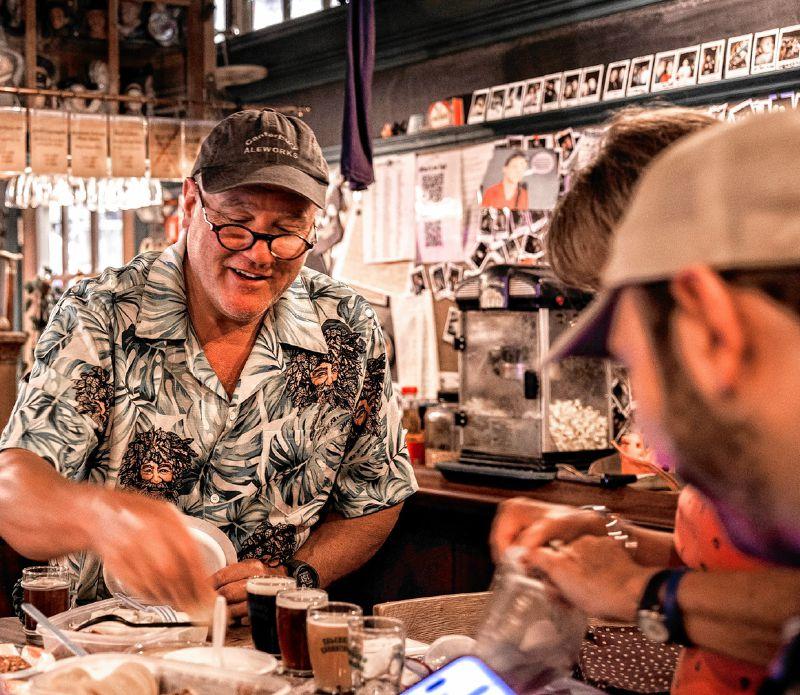
SteveAllman, thebrewery’s founder,owner,and soleemployee, donshis signature green Hawaiian shirt festooned with the head of his trademarked ‘Aleman,’ a letteraway fromhis surname.Allman bringsout aflight tohis customers.




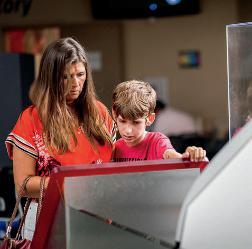





ABOVE: A signature crafted brew available at Canterbury Aleworks.
LEFT: A peek outside of the brewery to the outdoor seating area.
– a letter away from his surname – Allman fills pints ($9) and flights ($10) with an eclectic mix of punnily-named libations, from “We’ve been Jammed!” (a raspberry sour, which is indeed both quite sour and very raspberry) to “Weisscracker,” (a mesquite smoked habanero wheat ale that packs quite the punch).
Allman, 59, started brewing beer around 2012, nearly two decades after he built the woodworking studio above which his brewery operates. He con-
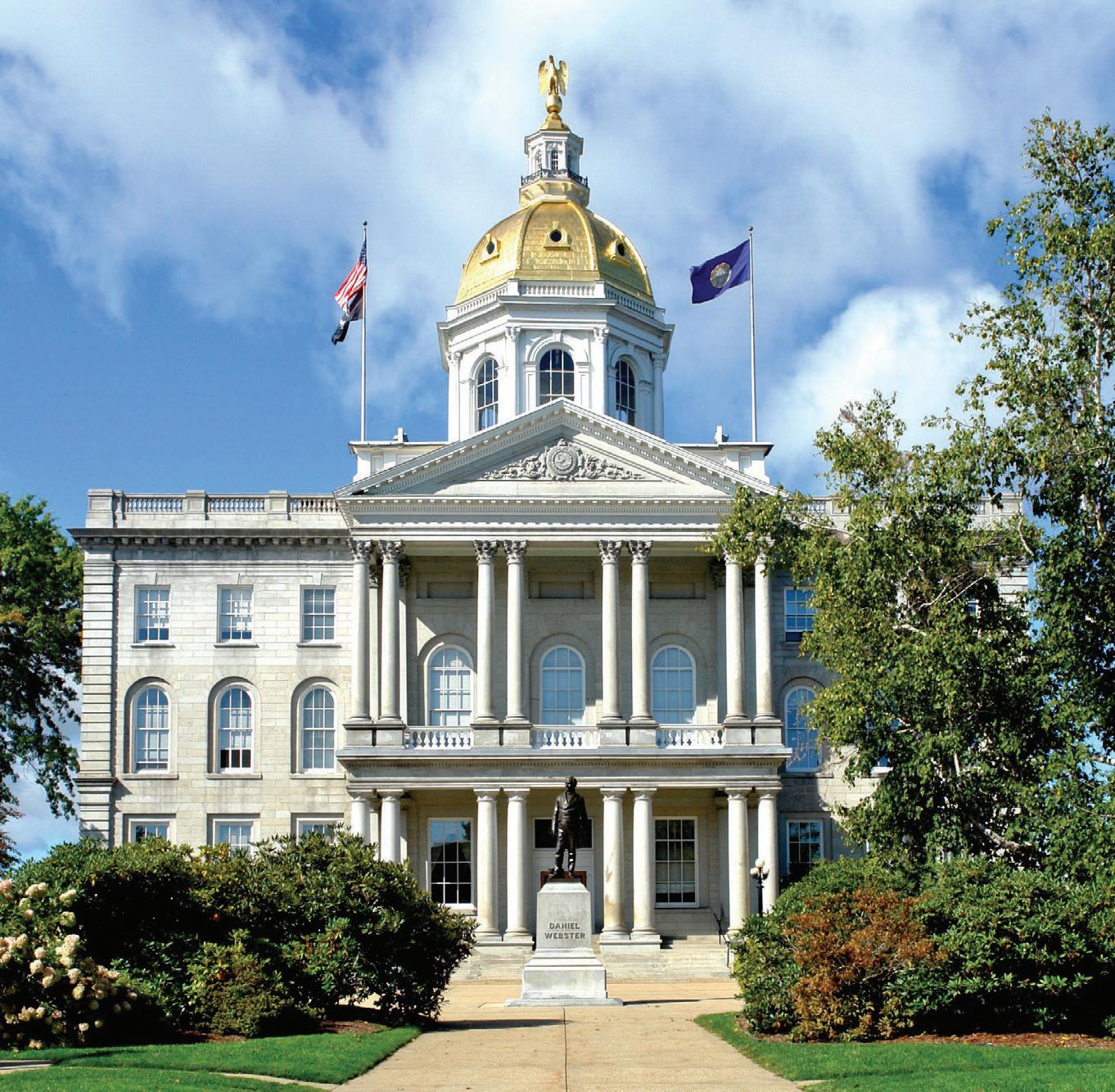

Excellence is something we strive for each time we provide legal counsel for the families, businesses, and municipalities of the Granite State. We are proud to serve the people and communities of NH.
• Individuals & Families •

siders it a “semi-retirement job” with a full-time salary. Aside from some monthly events, Canterbury Aleworks is open only on Saturdays and Sundays from 1 to 5 p.m., with a weeks-long winter break between Christmas and the start of February. During the week, Allman – who lives in a house overlooking the property – brews an average of one or two batches of beer per week using a wood-fired boil kettle.
“This is the center of my universe,” Allman said. “I’ve always liked to work where I live and live where I work.”
Allman grew up in Manchester as a self-described “Brita-phile,” watching Monty Python and speaking in a British accent from time to time. His father, an employee of an English aerospace company, bounced between the family’s home in Manchester and a flat in London, and shipped home the red phone booth when Allman was
“This is the center of my universe. I’ve always liked to work where I live and live where I work.”






























Tuckedin thewoodsa quartermiledown adirtroad,built onthebackside ofamulti-story woodworkingstudio, Canterbury Aleworks is one of the more-hidden of hidden gems.
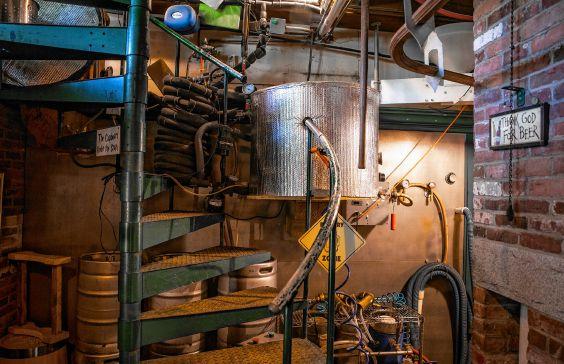


The sign outside of Aleworks.
a teenager.
When Allman decided to open his brewery a little more than a decade ago, he knew next to nothing about brewing beer.
“My resume when I started this was I’d watched two friends homebrew once,” he said.
“How hard could it be?” Allman thought.
Little by little, he learned the tricks of the trade, developing a devoted following called the crüe (think Mötley Crüe, the heavy medal band) along the way.
“We just love the vibe,” said Andy Van Cleave, a Canterbury resident and one of the most active crüe members. “I love that your cell phone doesn’t work well so you have to put your phone down and actually talk to people.”
Locals and visitors, bikers and grandparents, humans and dogs all flock to Canterbury Aleworks. On a summer Sunday afternoon, a 21st birthday was celebrated on the bottom level of the terraced outdoor seating area at the same time as an older couple read quietly in Adirondack chairs on the top level.
Both the beers and the atmosphere change with the seasons, Allman said. During the spring’s maple season, patrons come for the Murphy’s Red Friday made with maple syrup; in the fall, they line up in droves for the Oktoberfest lager. Certain beers stay on tap all year long, including favorites Galaxius Maximus (a hazy New England IPA) and Big Ben (a British Extra Special Bitter cask ale).
Outside of the weekend service, Allman opens the brewery for certain special occasions, including Shanty Night – a sing-along on the second Thursday of every month – and a crüe night for the regulars.
Amid its old-style pub vibe, Canterbury Aleworks is also perpetually changing – though certainly not losing its old-time feel.
Allman’s next project? A replica 1965 Shelby Cobra. ◆
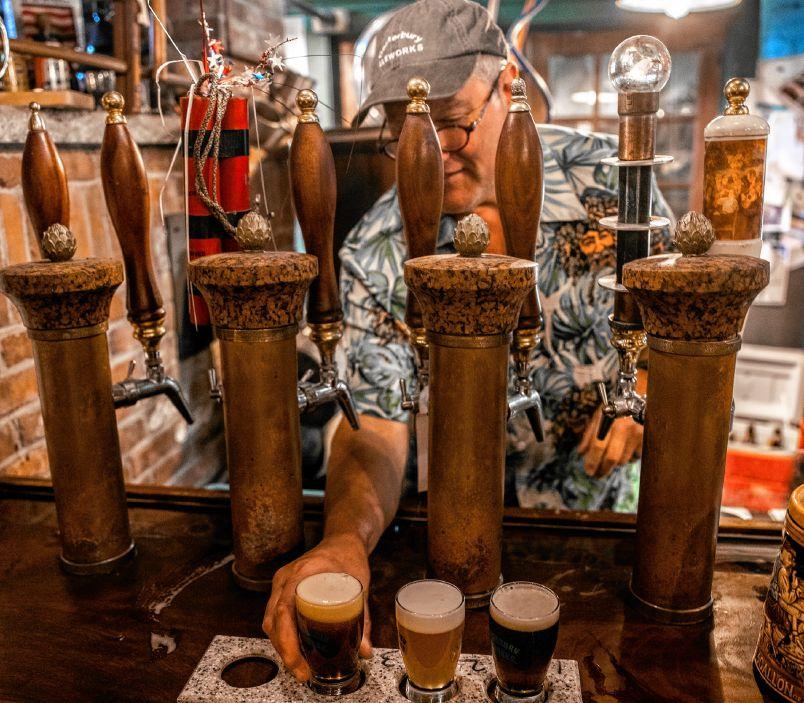
Celebrating Eric Janelle’s 25th Anniversary As A Goldsmith Thursday September 19th - Friday September 20th




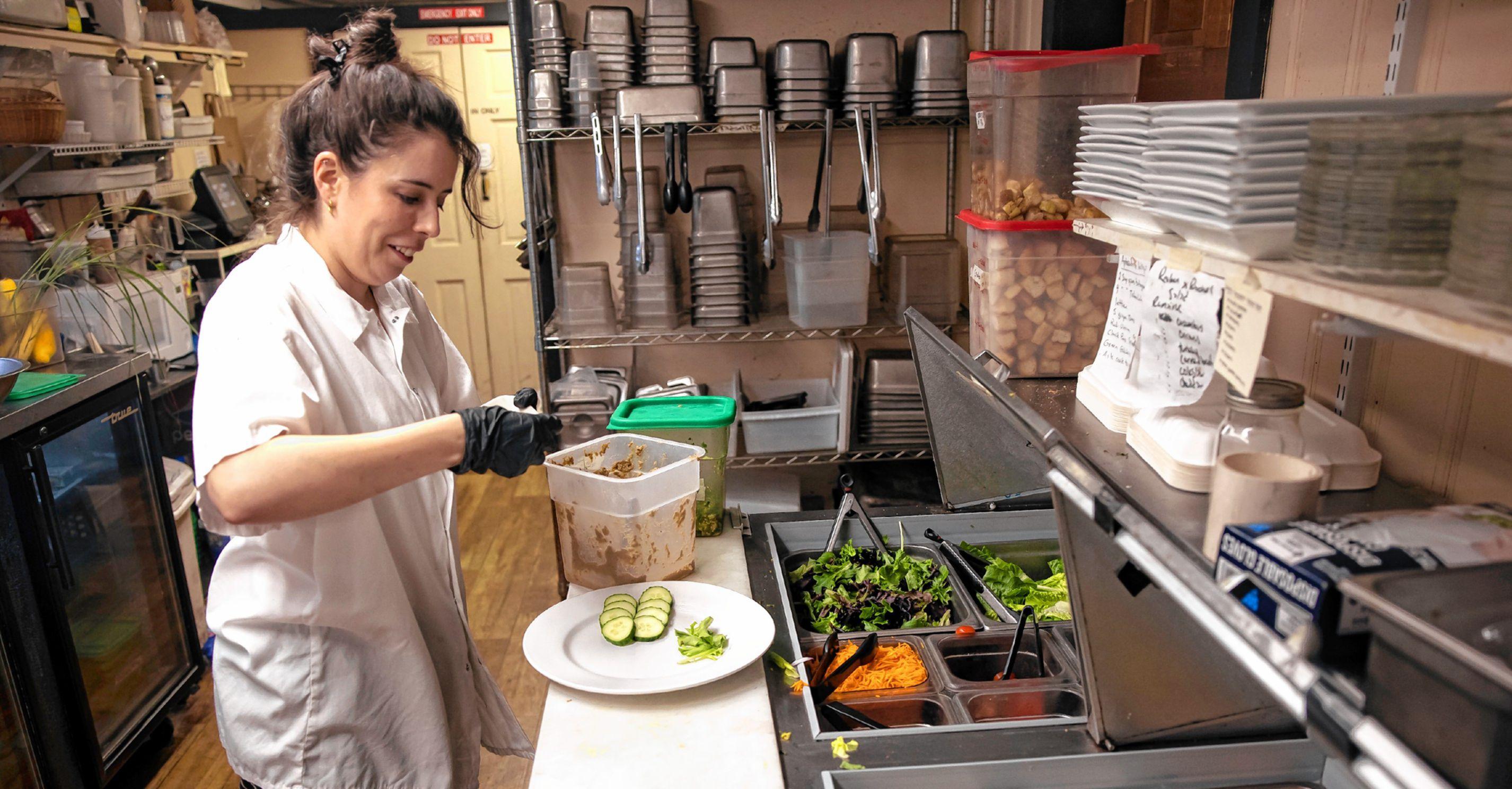
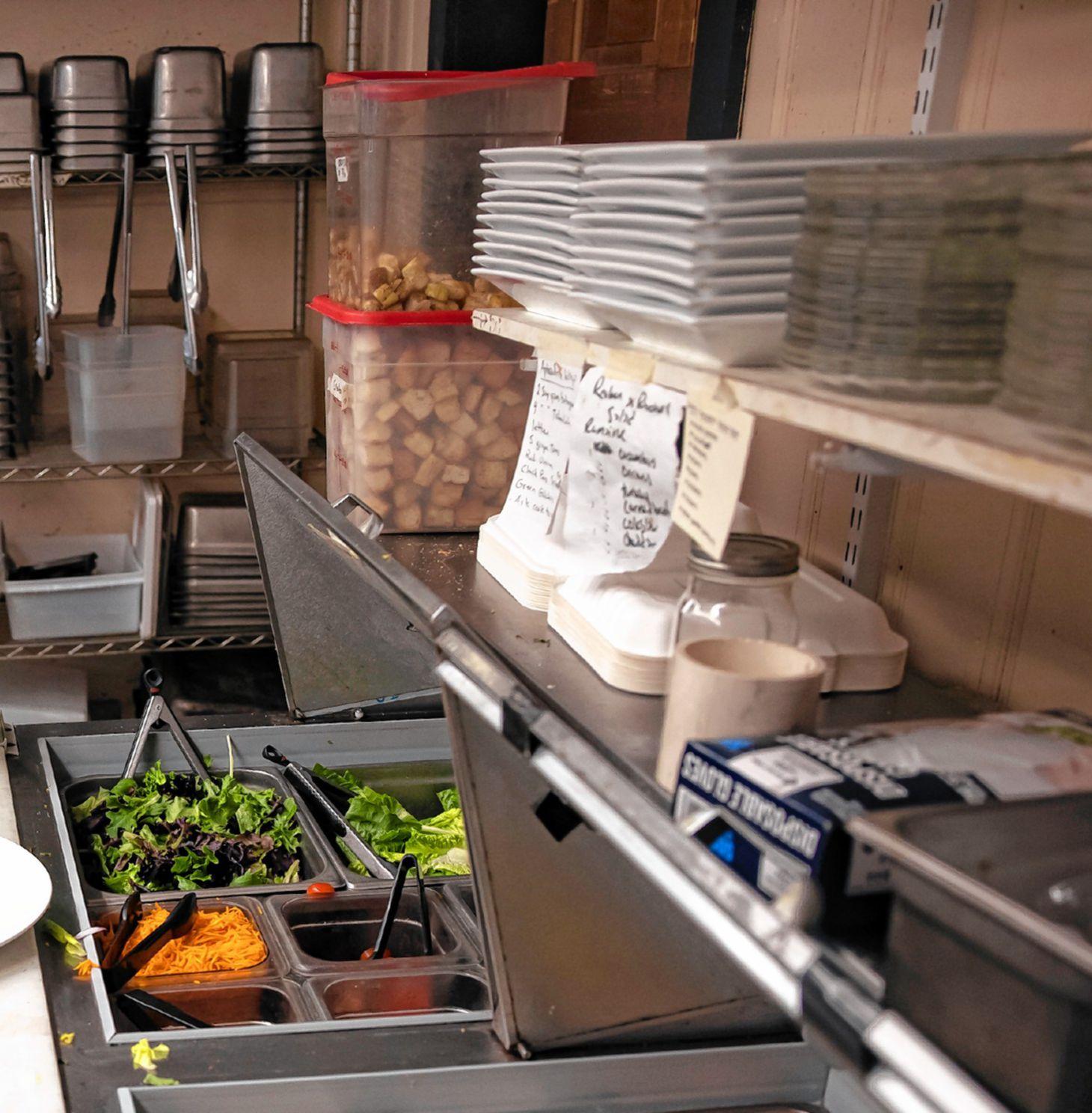

By SRUTHI GOPALAKRISHNAN
As fall paints Hopkinton in golden hues, the vibrant foliage reflects off the still waters of Kimball Lake, creating a picturesque view for diners at the Lakehouse Tavern.
Nestled against this backdrop, Richard Ridinger’s cozy establishment offers more than just a meal it delivers an experience that keeps patrons coming back for more.
In 2017, after years in the insurance industry, Ridinger took a leap of faith and bought the Lakehouse Tavern on Main Street, fulfilling a long-held dream.
“It’s one of those dreams you have but aren’t sure if you should,” he said. “But sometimes, you just have to take the dive.”
At Lakehouse Tavern, the menu caters


to a wide range of tastes. While classic American dishes remain a cornerstone, the tavern’s everevolving selection includes creative twists like Mediterranean-inspired tapas and flavorful curry dishes.
Ridinger said that the restaurant’s fish and
chips, served with hand-cut French fries, is a particular favorite among patrons.
Behind the scenes, Ridinger’s daughter, Katherine, runs the kitchen with a passion for culinary innovation. Her creative touch is evident in every dish, especially the vegetarian options

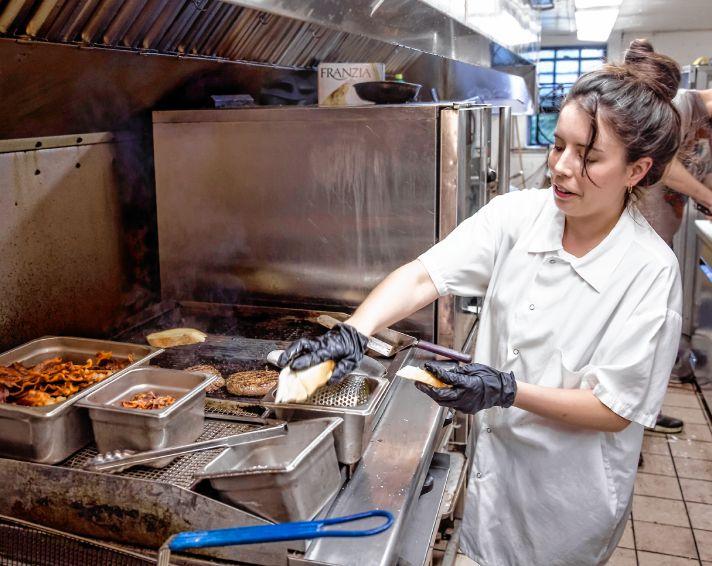
that go beyond the ordinary.
“Just because someone is vegetarian doesn’t mean they don’t want something special,” Ridinger said, reflecting on his daughter’s insightful comment.
One standout is the stuffed portobello mushroom caps, brimming with roasted garlic, spinach, and parmesan stuffing.
“It’s a cheesy and crunchy bliss,” said Ridinger. “That’s all you need.”
While the restaurant ensures consistency by sourcing from wholesale suppliers, Ridinger is committed to supporting local farmers.
Fresh, locally-grown ingredients often find their way onto the plates, thanks to the tavern’s own backyard garden, where grape tomatoes, string beans and other vegetables grow.
For those in the mood for a spirited drink, the tavern’s cocktail menu doesn’t disappoint. The Lakehouse Sunset, a blood orange martini, and
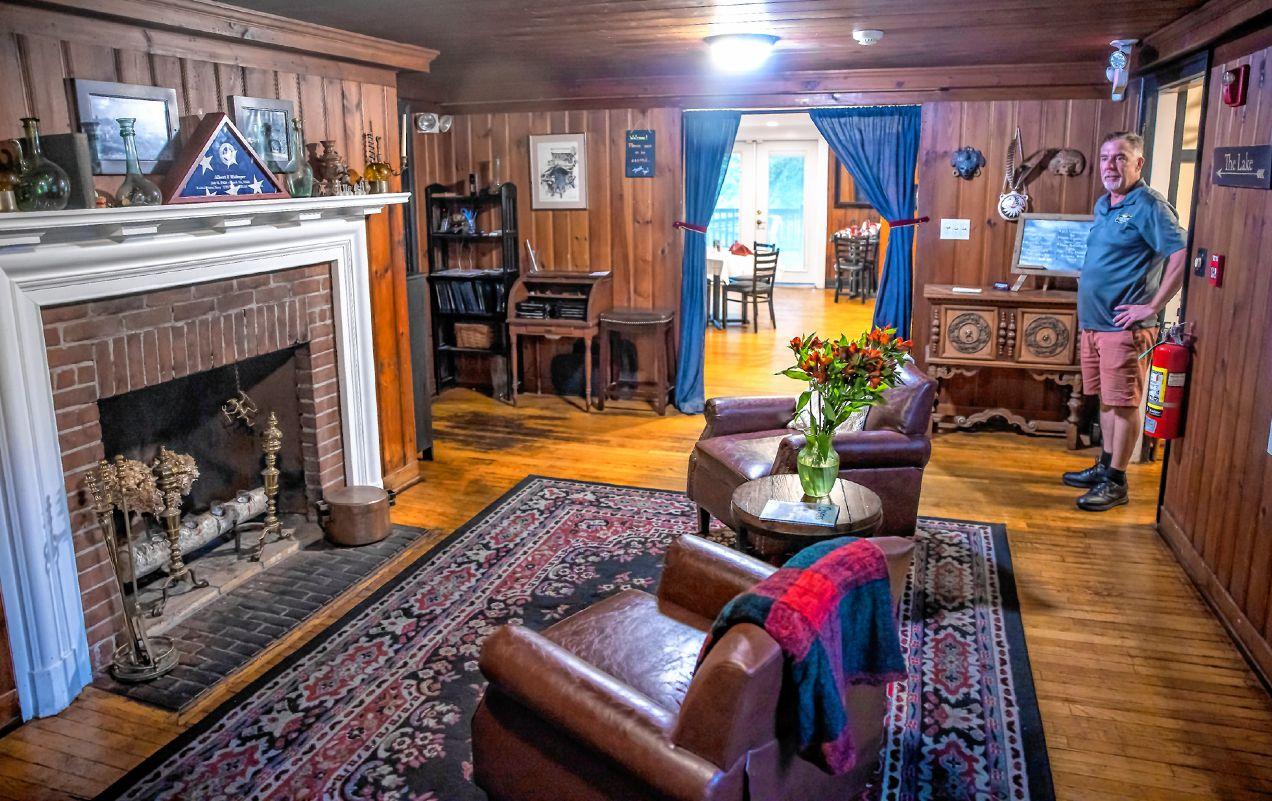
the pear martini garnished with rosemary are just two of the many creative concoctions.
Enjoying one of these while taking in the stunning fall views from the tavern’s deck is an experience to savor.
Adding to its charm, Lakehouse Tavern embraces its rich history, with a playful nod to local legend.
The menu features dishes named after Frank, a former resident from the 1860s rumored to haunt the building, making it a must-visit for those in the Halloween spirit.
Amid all the culinary creativity and historic ambiance, one thing remains constant: the tavern’s commitment to homemade goodness.
“We make everything from scratch except the ketchup and mustard,” Ridinger said.
As one of the few remaining familyowned restaurants in the area, the Lakehouse Tavern stands out not just for its food but for the experience it offers.
“It’s a unique environment,” said Ridinger. “Warm, friendly and comfortable is the experience you’ll get.”














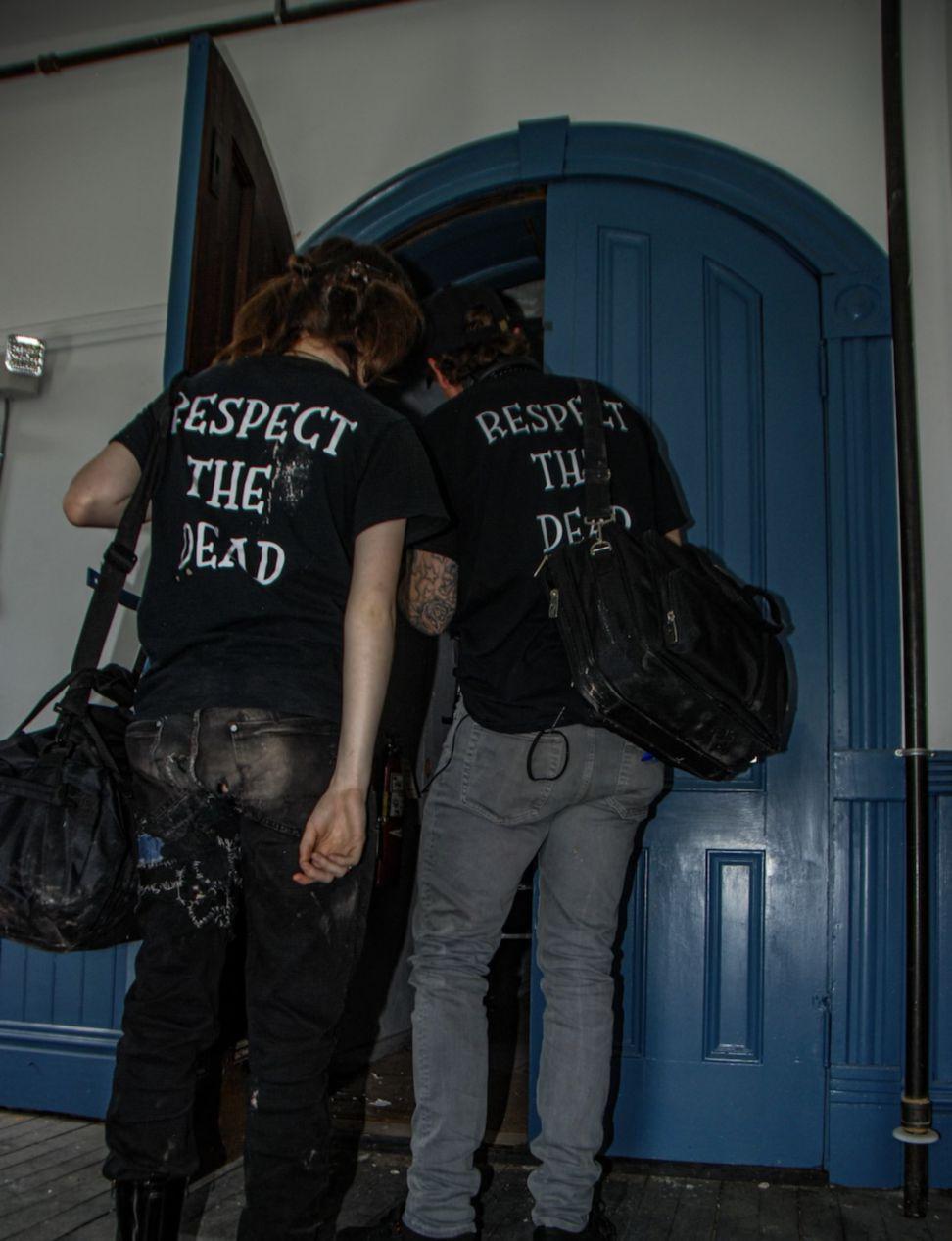
New Hampshire Paranormal Group was founded in 2024 – they regularly go on investigations and have reached up to 4,000 followers on Facebook
By SOFIE
“If there’s anyone in this room with us, can you touch the red light for me?”
Kayla Belanger watched the red dot, the sole light in the dark basement, intently. Mike Espinola waved his hand over it to make sure it was still working. It flashed green in response to his movement. It was.
Honey, Kayla’s mom, sat criss-crossed with a blindfold over her eyes and her hands clamped around the headphones in her ears. They were connected to a “spirit box,” or a device that picks up the voices of the dead. Honey’s job was to repeat what she heard. Everyone else was asking questions, unsure if anyone was on the other side to answer them.
“You don’t need to be afraid,” Kayla tried again. “Just touch the red light for me.”
Almost immediately, the red light flickered green. Kayla straightened in her seat. “Thank you,” she said calmly. “Can you do that again for me?” Before she could finish her question, the light blinked green
three more times.
“I did it,” blurted Honey, on the ghost’s behalf, almost like a child eager to show off his achievement.
Kayla smiled gently. “You did,” she said. “You did a great job.”
Espinola and his daughter, Jay, founded New Hampshire Paranormal Group in early 2024. The core group is no larger than four people, but the Facebook page has over 4,000 members. The group goes on “investigations”– visiting a supposedly haunted site – and sometimes hosts graveyard visits open to the public.
Espinola already had three young daughters when Jay entered his life. She had grown up with her mom, a woman Espinola met once at a party 16 years ago, in California. Three years ago, her mom told Espinola that Jay wanted to be in his life – she’d been scouring his Facebook page, and was dying to meet her dad and sisters. Six months later, she did.
When Jay and Espinola first spoke, it wasn’t awk-
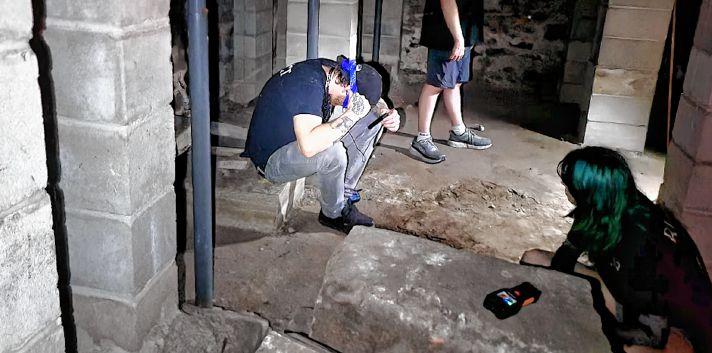









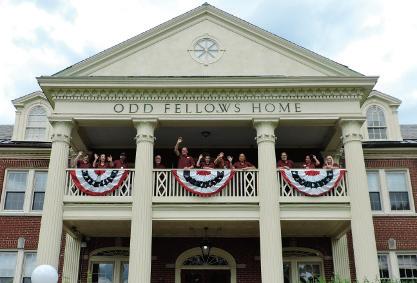

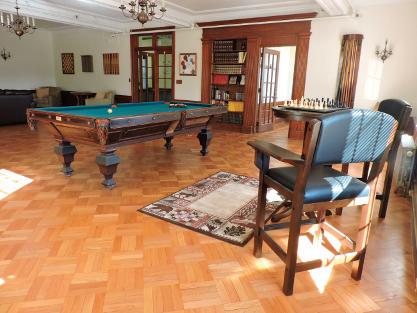
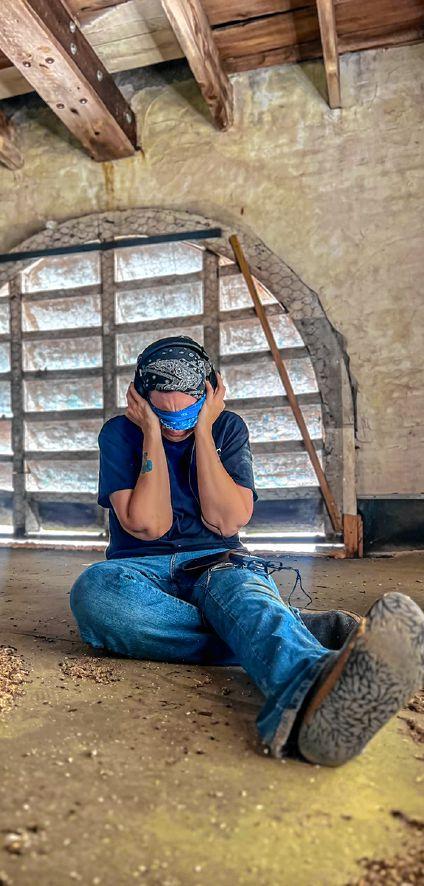
ward.
“Since that moment we met, we’ve just clicked,” Espinola said. “She’s my best friend.”
Jay decided to move in with Espinola. Eager to bond, they quickly discovered their shared love of horror movies. They made a list of 50 to watch by the end of the summer.
Espinola found himself talking about a paranormal group based in Nashua when he was a kid. It wasn’t much – just a group of kids hanging out in a cemetery with Ouija boards and sharing stories – but it was open to anyone, and created a community for people with this shared fascination of the living and dead alike.
That’s how they decided to start a new one together.
They were adamant about doing it
the right way. “So, you know, we invested probably a couple thousand dollars in ghost hunting equipment,” Espinola said, “and the entire team took online courses on how to use it.”
The online reception to the new group was enormous. Hundreds of people wanted in. After testing out a few variations of groups, they settled on a trustworthy inner circle.
Honey and Kayla, for example, had experienced hauntings as long as they could remember. According to Honey, the ghost of an old man tucks the kids in every night.
“We’re more comfortable with the dead than the living,” Honey joked.
Plus, Espinola liked having a mother-daughter duo on the team – it kept it kid friendly, which was the whole point.
That’s how five adults and two teenagers ended up at Mayhem Ink, a Nashua tattoo parlor notorious for the broken gravestone reading “THOMAS” in the basement. They don’t show up unprepared: NHPG is equipped with all the latest spiritseeking technology.
“I’m very skeptical,” Espinola said. “So I want to be a ghost-hunting team that is strictly scientific analysis. I want it to be all equipment.”
Here’s what they had with them:
The Spirit Box: a device that shuffles through ordinary A.M. radio stations, supposedly able to pick up the voices of weaker spirits. The person using it must be blindfolded and deaf to other noises in the room, to make sure they aren’t interpreting what they hear through the lens of what they want to hear. That way, the person repeating the spirit’s answers does not know the questions that provoked them. Espinola constantly tests his group members – when Honey had the headphones in, he called, “Honey! We have to get out of here! I’m serious – run!” She didn’t react.
The REM Pod: the source of the red light. It’s a small black cylinder with a light that turns green when anything gets near it. It is one of
many EMF (electromagnetic field) detectors that the team uses, picking up shifts in energy nearby. It’s also the reason why everyone has to put their phone on airplane mode during investigations – otherwise, it could set off the light erroneously.
“I’m so skeptical that I’m always trying to justify everything,” Espinola said. “If an EMF detector goes off near a wall, I’m searching for wires around that wall.”
The Thermal Image Camera: a monitor that highlights significant warmth or coldness in a room. Ghosts have a reputation for sending shivers down your spine. This machine turns that feeling into a tracking method.
And, finally, The Flashlight: Necessary when venturing through dark, dusty basements. Even ghost hunters need to see.
When they arrived, the owner of Mayhem Ink, unfazed by the army of

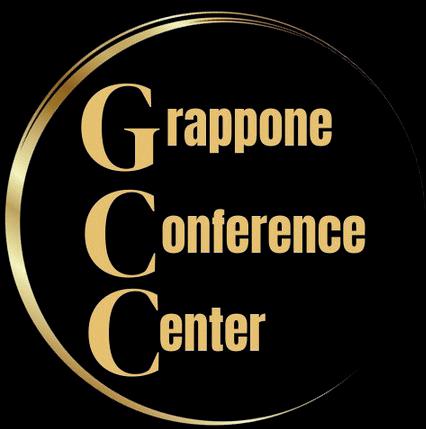


• Advanced Sound Systems: Ensure every word is heard clearly by your audience.

• High-Definition Displays: Engage and captivate with crisp, vibrant visuals.
• Zoom Integration: Connect with remote attendees effortlessly
• Wireless Connectivity: Simplify your setup and transitions with our user-friendly tech.































































New Hampshire Paranormal Group sets up their equipment.

black T-shirts that read “RESPECT THE DEAD” in skeletal font and massive duffel bags, showed everyone around the premises. The basement had two sides. One was an old cellar that required walking across a withering plank to access, and the other had the infamous gravestone.
The team acted as a well-oiled ma-
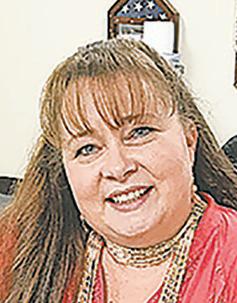

chine. Once the owner left them to it, they sprung to unpack the duffels. “Who’s operating the camera?” someone asked as devices circulated from hand to hand.
They ducked under pipes, past cobwebs, and through holes in the wall before setting up the equipment. The REM pod and thermal imaging









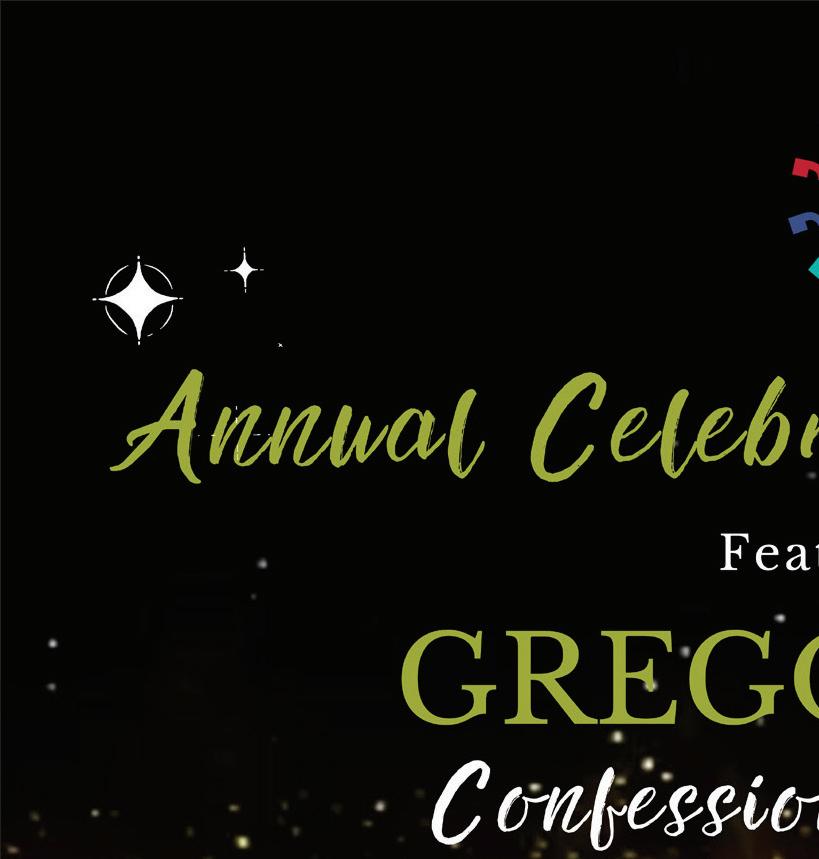
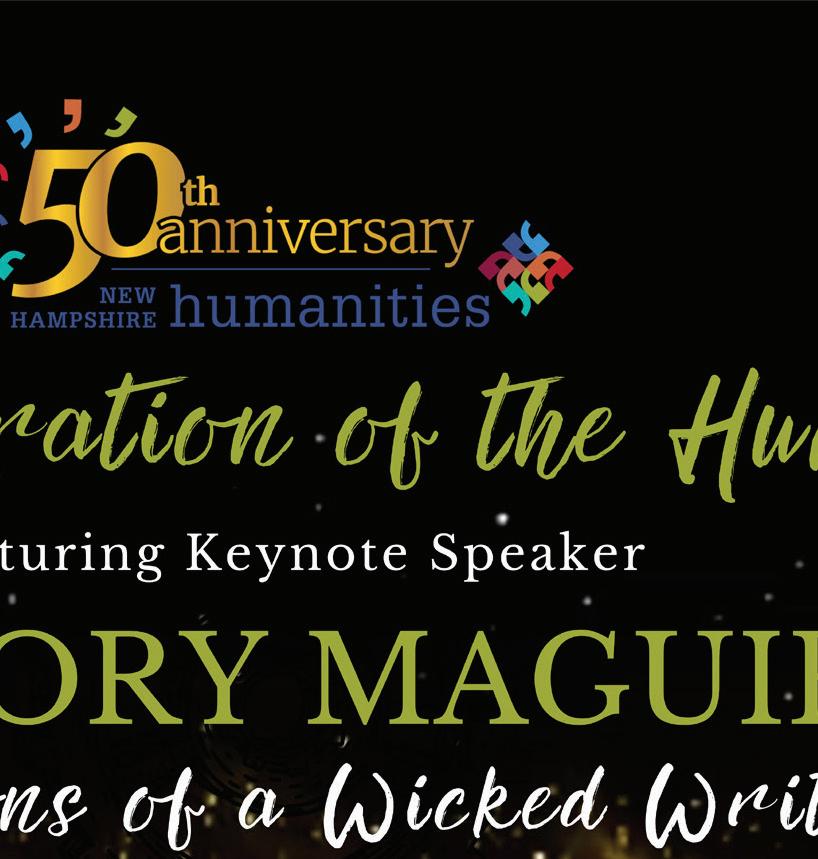







camera didn’t produce much excitement, but the group doesn’t give up on a spirit easily.
Coaxing a ghost into conversation with the living is like convincing a child to eat vegetables. They’re reluctant and afraid, and patience is key for success. Kayla proved quite skilled at this, despite her age. Her voice was soothing, and once Honey (via spirit box) revealed the ghost’s name as Robert, she wielded it wisely.
“You can talk to us, Robert,” she urged. “You have nothing to be afraid of. You’re not going to get in trouble.”
“I like you,” Honey said on Robert’s behalf.
“Thank you, Robert,” Kayla responded. “I like you too.”
Not all of the conversation went quite so smoothly – Honey kept repeating the number ‘80,’ and as much as they tried to reason with Robert to explain, he never did.
After two hours, a few laughs, and one or two moments of spine-tingling fear, it was time to go.



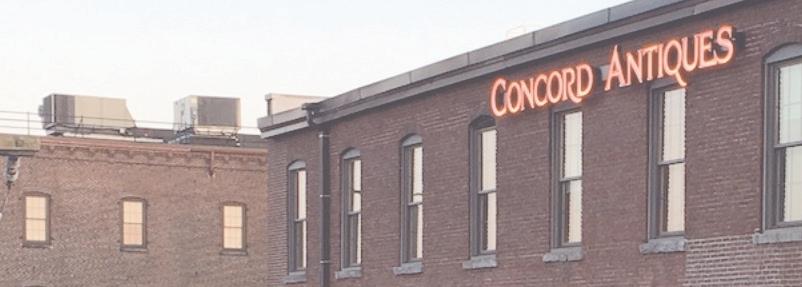




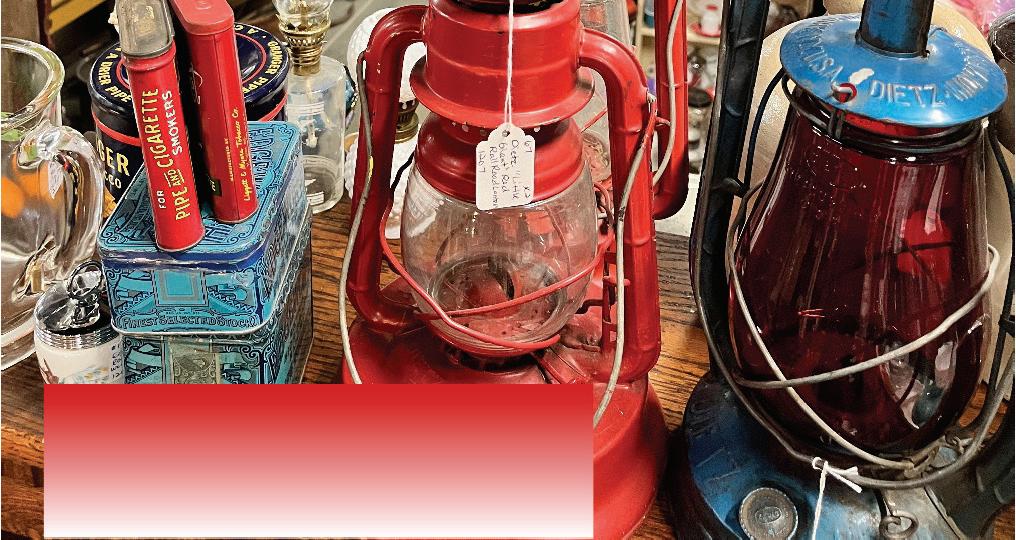







“It was lovely talking with you,” Honey addressed the room. “But you need to stay here. You can’t follow us.” The rest of the team nodded. This was protocol.
The Mayhem Ink staff were very eager to hear what the group had found in their basement.
“Oh, there’s a lot going on down there,” Espinola told them. They rehashed the past two hours of Robert’s maddening stubbornness and sobering moments of kindness. The staff leaned forward in disbelief, harboring nothing but earnest interest. The debrief lasted at least ten minutes.
Outside, the crew packed up the singular white van they came in. They buzzed with theories about Robert’s life and possible interpretations of his words before piling inside, sliding the door shut, and driving off into the summer night.
Whether or not that was really a ghost they were speaking to, everyone was leaving content. ◆







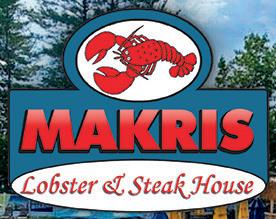

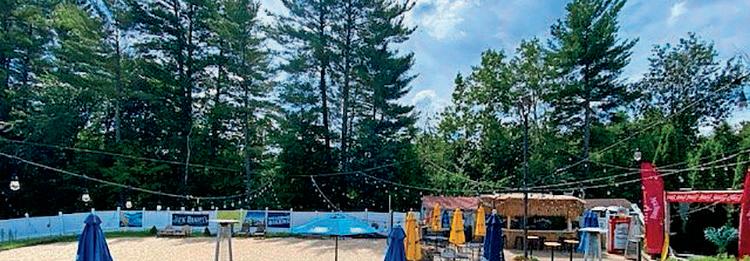













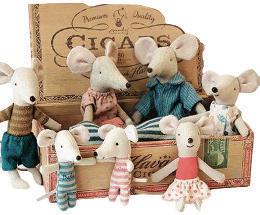






















Feeling festive for fall? Don’t miss these events. Here’s a list of fairs, festivals and activities to check out from now until spooky season.
Get your Scot on at Loon Mountain Resort Friday, Sept. 20 to Sunday, Sept. 22 for a celebration of Scottish Heritage right at the beginning of the fall foliage season. The weekend festival is packed with things to do, from music, dance, pageantry, and Scottish culture to heavy athletics, hands-on activities, and spirited competition.
Weekend passes (adult, child and toddler rates) and single-day admission tickets are available for the annual New Hampshire Highland Games & Festival. Access to the grounds is 8 a.m. to 5 p.m. daily with additional ticketed evening events in various locations in the Lincoln-Woodstock area. For more information, visit nhscot.org.
Enjoy a family day of Native foods, craft demonstrations, and educational exhibits at Mt. Kearsarge Indian Museum’s Harvest Moon Festival on Sunday, Sept. 29 from 10 a.m. to 4 p.m.
Mary-Ann Juma, left, and Ines Ouedraogo of ZambaViva from Boston dance at the 2023 Multicultural Festival at Keach Park.

Food for sale, prepared using Native American recipes, includes bison stew, chicken wild rice stew, several varieties of cornbread, and Native sweets. For more information visit indianmuseum.org.
Every September, local community members gather to celebrate the beauty of diversity in the Capital Region through food, performances, art, activities and a parade of flags. Organized by a dedicated group of individuals, businesses and organizations, the goal of Concord Multicultural Fest is to foster an appreciation for diversity by providing engaging opportunities to share and learn about the many different cultures of the Capital Region.
This year’s festival will be held at Keach Park (Concord Heights) on Sunday, Sept. 22, from 11 a.m. to 5 p.m. See concordnhmulticulturalfestival.org for more information.
Take in a weekend of live music, 4H demonstrations, festive fair foods, roving performers and New Hampshire fall fun at the Deerfield Fair (34 Stage Road, Deerfield) from Thursday, Sept. 26 to Sunday, Sept. 29. Tickets are $12 for adults, free for kids 12 and younger. Senior days (Thursday and Friday, purchased at the gate, 65 and older) are $9. All military (active, reserves, veterans) are free with identification. Hours are 8 a.m. to 10 p.m. Thursday through Saturday, 8 a.m. to 7 p.m. on Sunday. For more information,
visit deerfieldfair.com.
Bringing films and community together, the 12th annual Monadnock International Film Festival (MONIFF) showcases high-quality, independent cinema every year in the beautiful Monadnock Region. This year’s event will take place on Friday, Oct. 4 through Sunday, Oct. 6. MONIFF features award-winning films on the festival circuit, domestic and foreign, along with premieres of regionally produced films by New Hampshire and New England filmmakers. Get updates on the film schedule and purchase passes at moniff.org.
Kick off your leaf-peeping season with a trip to the 77th Warner Fall Foliage Festival on Friday, Oct. 11 through Sunday, Oct. 13. Visitors and residents alike are invited to this annual event to join in the fun with a 5K road race, midway and rides, live entertainment, parades, food and craft vendors and more. For updates, follow along at wfff.org.
Surround yourself with plenty of pumpkins, delicious food, and captivating entertainment at the annual Keene Pumpkin Festival on Saturday, Oct. 12 at 2 p.m. This family-friendly event is great for all, whether you’re a pumpkin enthusiast or a fan of fall in New England. Visit pumpkinfestival.org or Keene Pumpkin Fest on
Facebook for more details.
Get into the spooky spirit with two days of fun and festivities in downtown Laconia for New Hampshire Pumpkin Festival, with activities beginning on Oct. 22 through Halloween. Enjoy pumpkin displays, a 10k and 5k run/walk, craft and artisan show, a pie eating contest and more. Visit nhpumpkinfestival.com for more information.
Get your costumes ready for downtown Concord’s spookiest night out. Intown Concord’s Halloween Howl returns to Main St. on Friday, Oct. 25 from 5:30 p.m. to 7:30 p.m. Join in for community trick-or-treating, festive costumes and decor, and plenty of ghoulish games and activities for the whole family to enjoy. The event begins at 5:30 p.m.
Intown Concord’s First Friday Art Walk, a vibrant celebration of creativity and community, takes place on Friday, Nov. 1, from 4 to 8 p.m. Greater Concord will come alive with art galleries, local businesses, theaters, and restaurants partnering with talented artists, art organizations, and nonprofits. A comprehensive Art Walk map of all participating locations will be emailed in advance to each participating location to print and display, ensuring visitors can easily navigate and enjoy the event. ◆
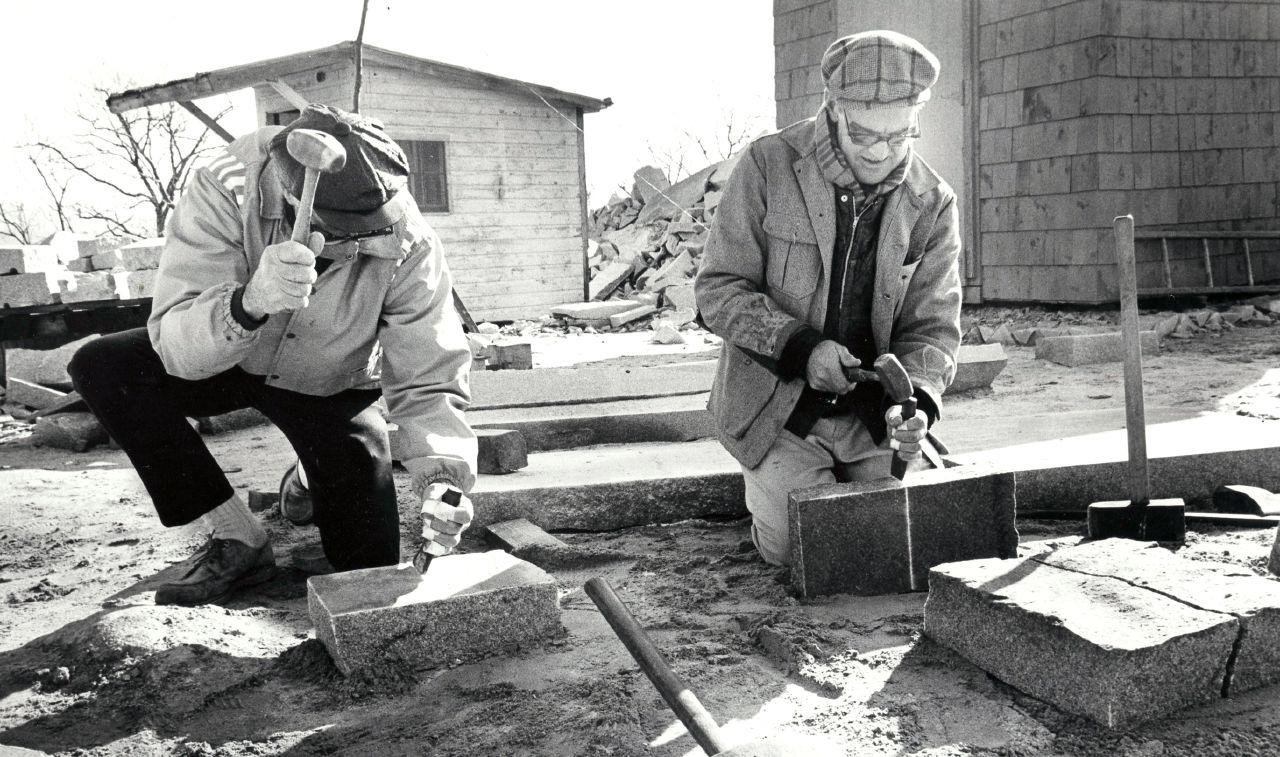
The granite industry in North America was born at a quarry in Quincy, Massachusetts, and expanded to large-scale quarrying in Chelmsford. Because all of New England shared the granite outcroppings, Maine, Vermont and New Hampshire all produced significant quantities of granite. Massachusetts and Maine led the nation in production.
High-quality granite came from Concord’s northwest quadrant. A
dozen or more quarries cut into Rattlesnake Hill late in the nineteenth century, employing 1,400 men. One of them, the Swenson Granite Company, survived prospered and expanded throughout the twentieth century. Early in the twenty-first century, Swenson Granite and its affiliated companies quarried more granite than any other company in North America.
Granite crane on top of Rattlesnake Hill. The Swenson family quarried that stone since John Swenson purchased the land in 1883.
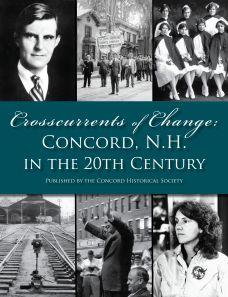

Concord residents cherished the gilded eagle atop the State House as the peak of the city’s skyline. Concord’s true apex was the Swenson
The excerpt, written by Jennifer Kretovic, is part of the chapter “The company we keep” in “Crosscurrents of Change.” Swenson Granite’s newest owners – Birch Hill Equity Partners –quietly closed the Concord quarry this summer and laid off employees ending decades of activity at the site. The company’s showroom on North Main Street remains open to customers.
‘Crosscurrents of Change’ Concord, N.H. in the 20th Century’
This 400-plus page hardcover edition introduces you to the people who helped shape a city, and it takes you through tragedy and triumph with some of the defining moments in Concord history. To purchase a copy or to learn more, visit concordhistoricalsociety.org/store.

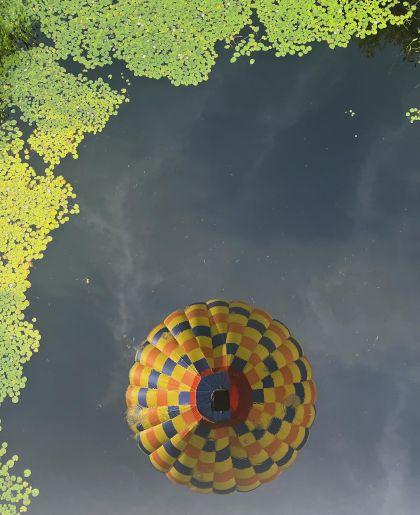



Concord’s own Bob Mielcarz hits his drive on the first hole at Concord Country Club on what could be his last round at the State Am tournament in July.
BELOW: Jim Milliken points to one of two trees he helped plant on Storrs Street near the Bank of America office in downtown Concord. Through his Arbor Day projects, Milliken has been responsible for planting trees all over the city.
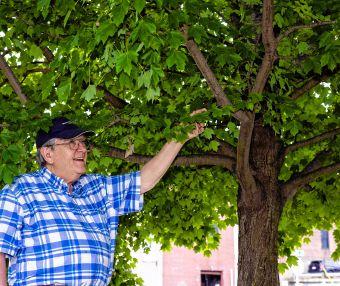

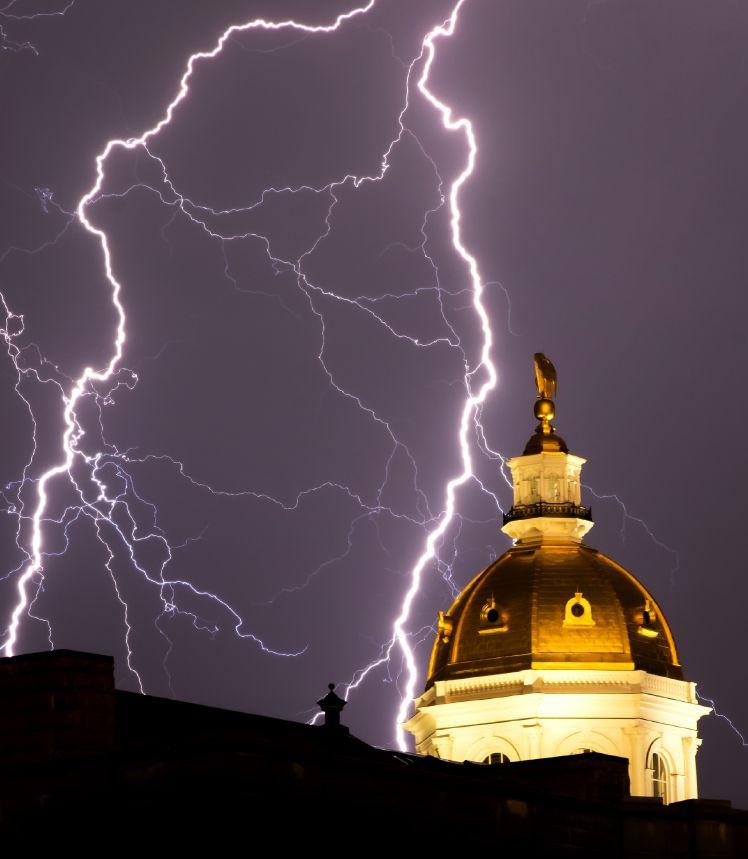
Lightningstrikeson theeastsideof theNewHampshireStateHouse asafront movedthrough theareaonJuly 16.Theroofof theStateLibraryis inthe foreground.

A small building peeks out from amid maples in various stages of changing colors in a field off of
Contribute
>> Welcome to ‘A Thousand Words,’ a quarterly feature that ends the magazine with an iconic photo. Share your image with us, and we may be able to use it in a coming issue. Only high-resolution photos are accepted, and despite the intent of the feature, we will need to accompany your image with a few words. So please send your photo and a brief description to editor@aroundconcord.com.
